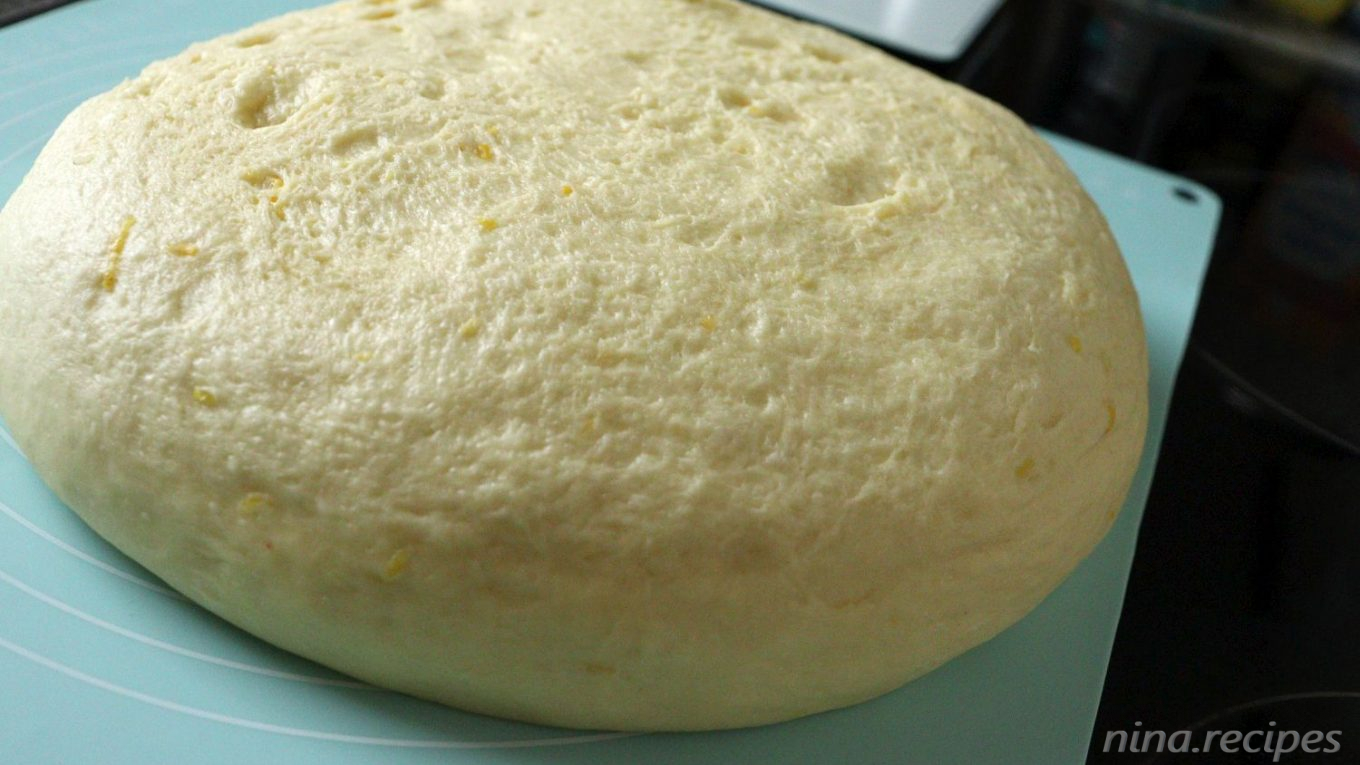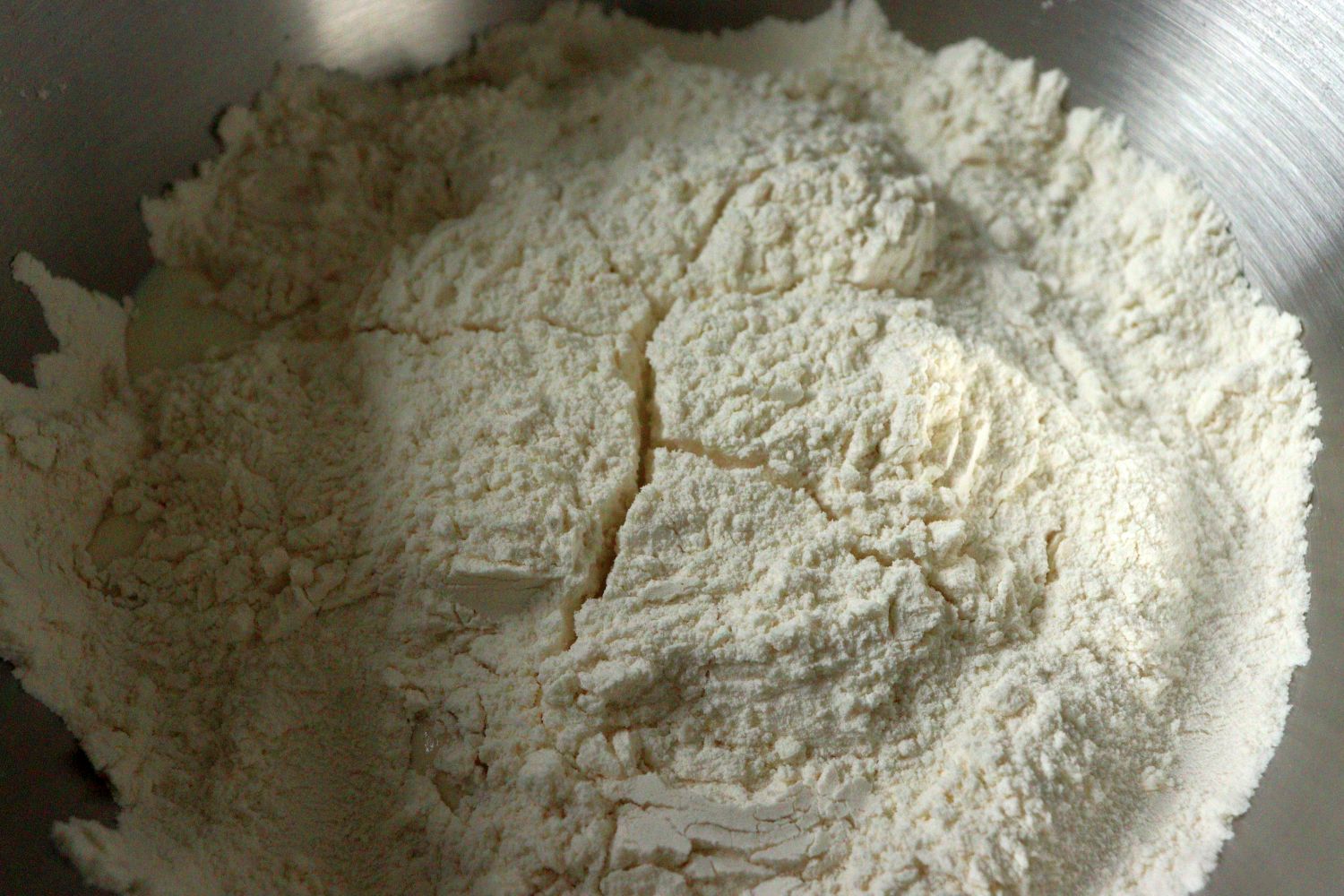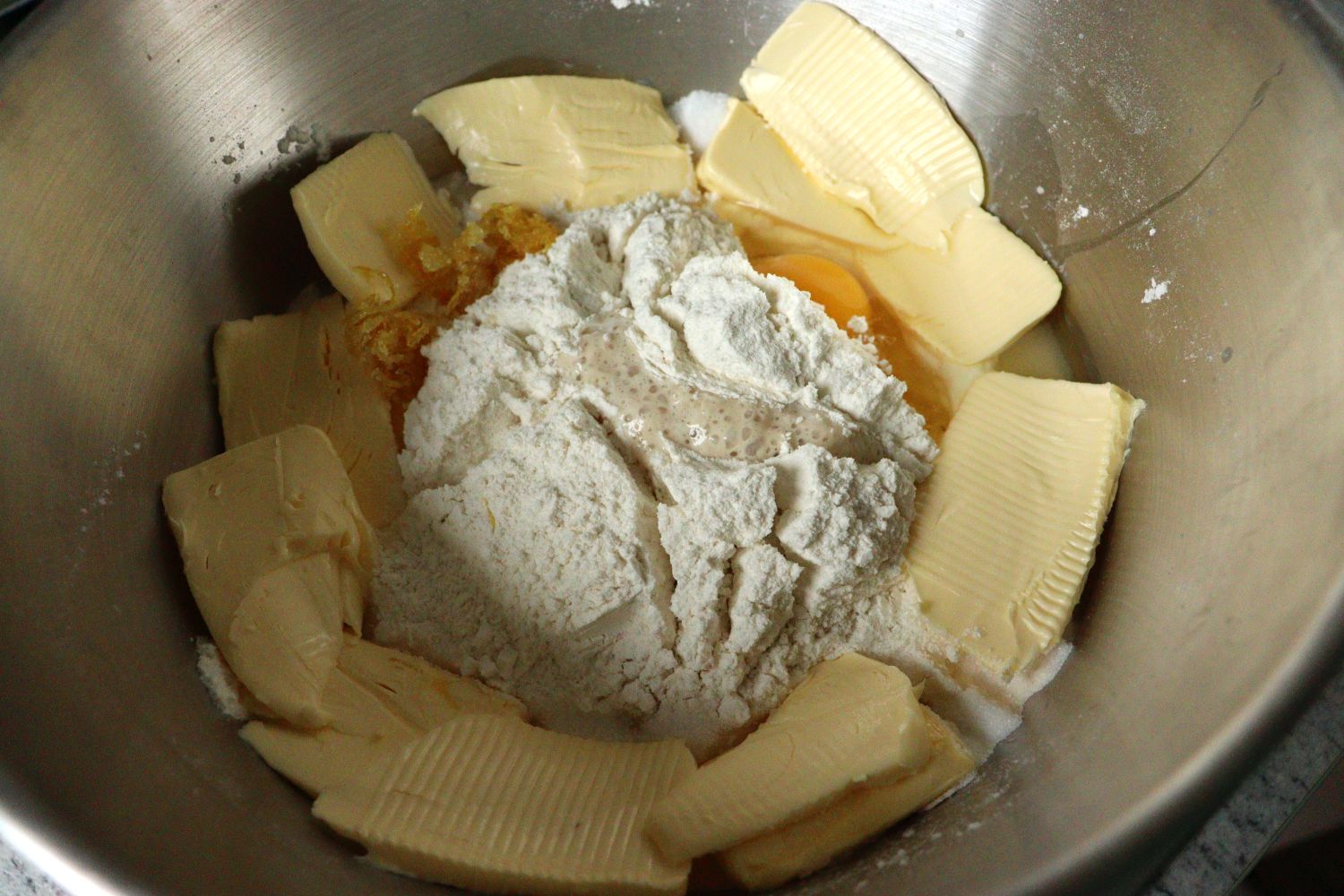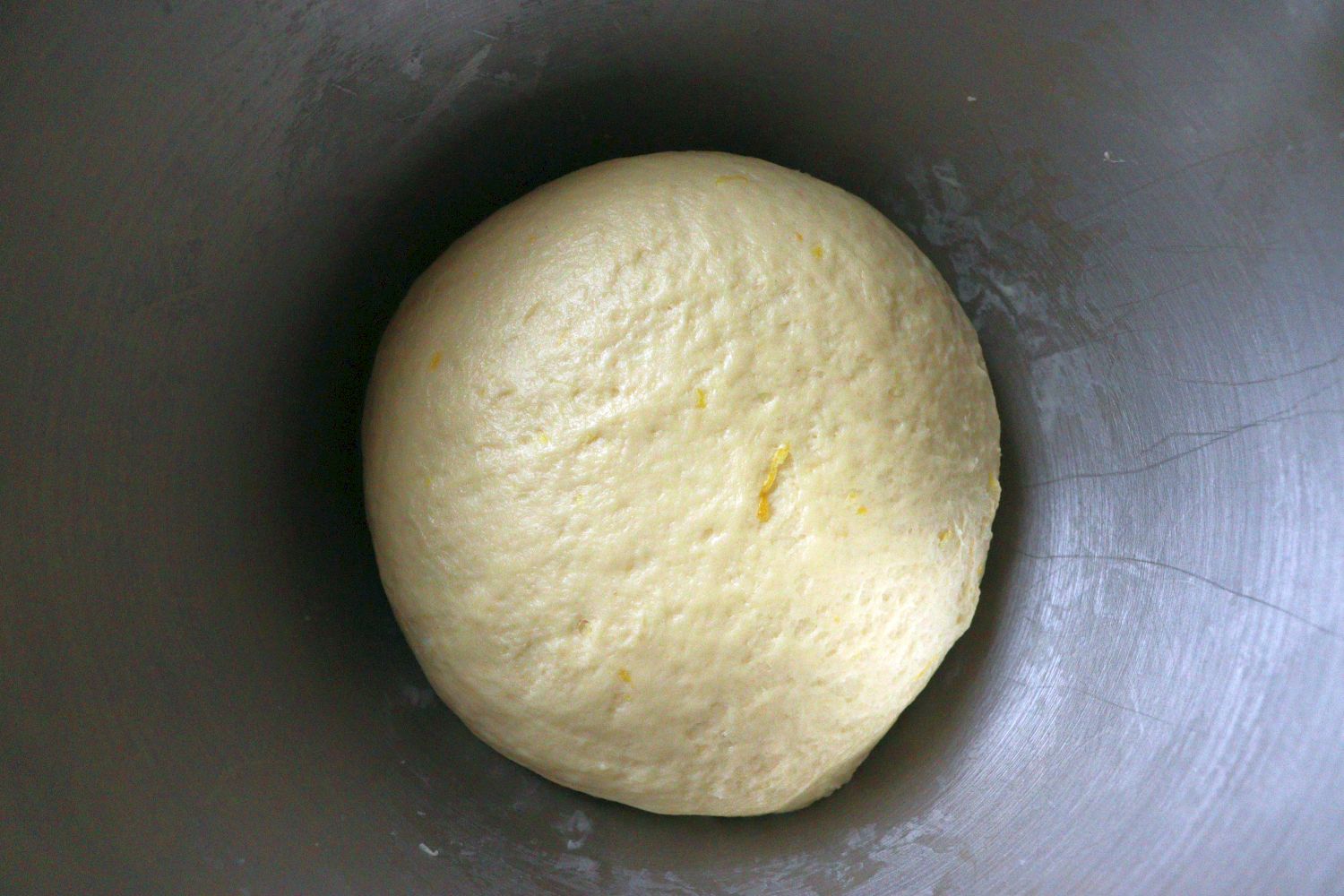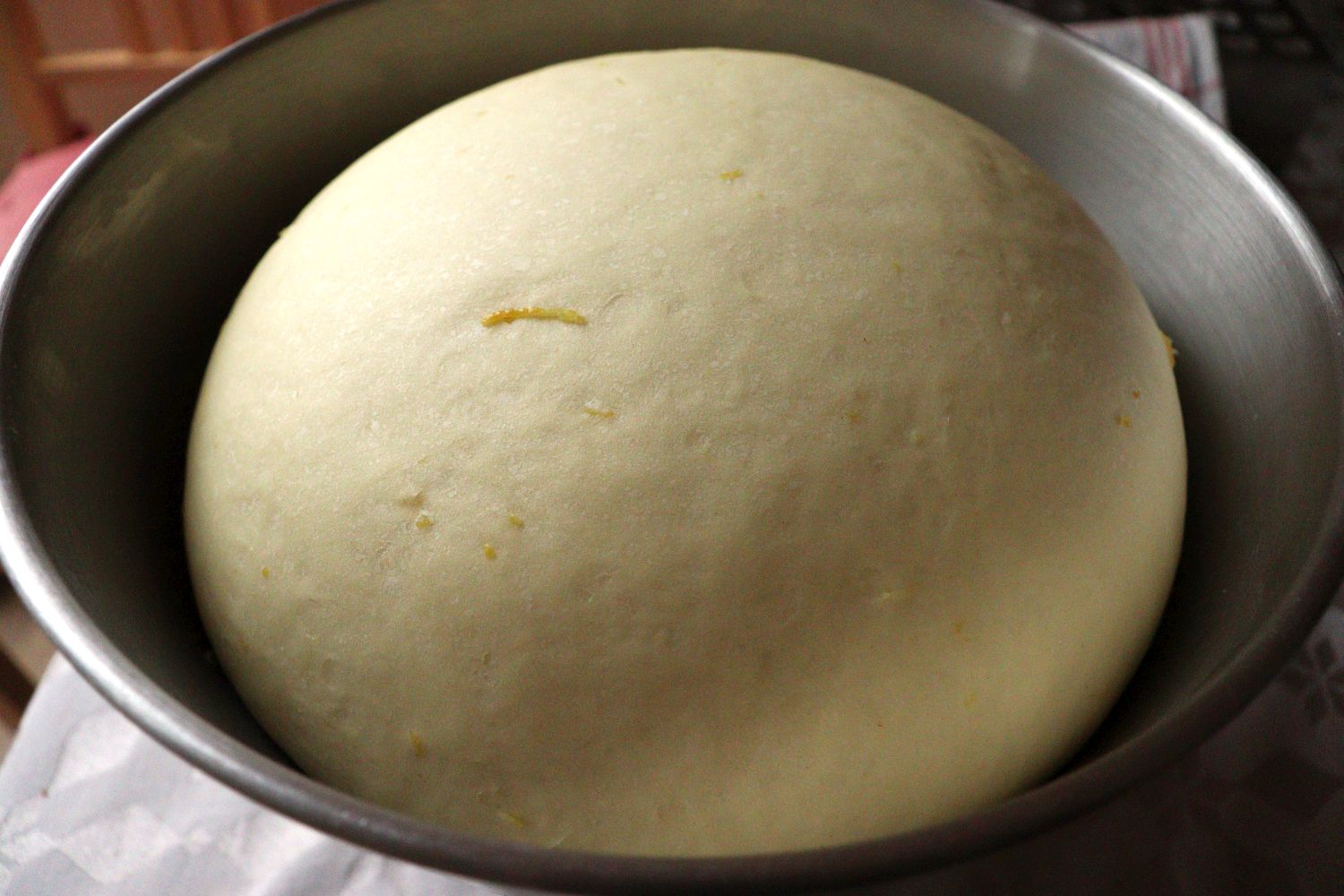Yeast Dough – Hefeteig
One of the baking basics is yeast dough but how it’s made depends a lot on the desired final product. Yeast dough for pizza, bread, or bread rolls is slightly different than the one for tray cakes. And did you know that German Stollen also uses a type of yeast dough?
There are mainly 3 types of yeast dough in German baking which can be adapted to fit your needs. The main difference between them is the added quantity of fat (usually butter). The sweets made from yeast dough needs to have at least 10 parts fat and/or sugar to 90 parts flour.
Light Yeast Dough (Leichter Hefeteig)
Light yeast dough is a dough with a lower fat content, therefore, more elastic and with big pores which give the characteristic fluffiness. It usually has 10-15% fat to the flour level.
Typical baked products from light yeast dough are Jam Filled Yeast Buns (Buchteln/Rohrnudeln), Raisin Buns or Chocolate (Rosinen-/Schokobrötchen), Poppyseed and Quark Buns/Kolasche (Kolatschen), Rusk (Zwieback), deep-fried sweets (Berliner, donuts, Apple rolls (Apfelkrapfen), etc.).
Medium Yeast Dough (Mittelschwerer Hefeteig)
Medium yeast dough has a higher content of fat than light yeast dough: between 15% and 25% fat to the flour level. The dough is also fluffy but with a finer taste thanks to the extra fat. This is my favorite and most made yeast dough.
Typical baked products from medium yeast dough are Braided Yeast Bread (Hefezopf) with or without fillings, Sweet Raisin Bread (Rosinenstuten), figures made of yeast dough for special occasions like New Year, Easter, Christmas, etc., Tray Cakes (Blechkuchen) like Bee Sting Cake (Bienenstich), Butter Cake (Butterkuchen), Streusel Cake (Streuselkuchen), Plum Cake (Pflaumenkuchen), Apple Cake (Apfelkuchen), etc.
Heavy Yeast Dough (Schwerer Hefeteig)
Heavy Yeast Dough has the highest fat content among all yeast doughs: between 25% and 50% fat to the flour level. Because of the high-fat content, a pre-dough (Vorteig) needs to be made and later mixed with the main yeast dough.
Typical baked products from heavy yeast dough are Stollen (traditional German bread eaten during the Christmas season) and Osterfladen or Osterbrot (traditional German bread eaten on Easter either for breakfast or in the afternoon with coffee or tea) which is similar to Stollen but it doesn’t have the typical spices.
Pre-dough Recipe (Vorteig) ~300g:
- 125 g all-purpose flour
- 125 g milk
- 40-50 g fresh yeast
- Make a hole in the flour and add the yeast in the middle.
- Add the warm milk and mix it until incorporated. You should get a sticky dough.
- Cover it and let it proof for about 45 minutes.
This pre-dough is enough for 2 Stollen main dough (~750g each) or 3 smaller Stollen (~500g each) main dough.
Light Yeast Dough Recipe (Leichter Hefeteig):
- 500 g all-purpose flour
- 200 g lukewarm milk
- 30 g fresh yeast
- 60 g caster sugar
- 60 g butter (room temperature)
- 1 egg or 30ml milk (2 tbsp)
- 5 g salt (1 tsp)
- 1 sachet vanilla sugar (optional)
- peel of half a lemon (optional)
Medium Yeast Dough Recipe (Mittelschwerer Hefeteig):
- 500 g all-purpose flour
- 200 g lukewarm milk
- 30 g fresh yeast
- 60 g caster sugar (4 tbsp)
- 100 g butter (room temperature)
- 1 egg or 30 g milk (2 tbsp)
- 5 g salt (1 tsp)
- 1 sachet vanilla sugar (optional)
- peel of half a lemon (optional)
Heavy Yeast Dough Recipe (Schwerer Hefeteig) for 2 Osterfladen/Osterbrot (Easter Bread):
- 300 g pre-dough (Vorteig)
- 350 g all-purpose flour
- 60 g sugar
- 200 g butter (room temperature)
- 2 eggs or 60 g milk (4 tbsp)
- 5 g salt (1 tsp)
- 1 sachet vanilla sugar (optional)
- peel of a lemon (optional)
Fruits for the Easter Bread:
- 200 g Raisins (can be replaced with Cranberries or even with chocolate chips)
- 30 g Rum for raisins (can be left out or replaced with apple juice for soaking the raising)
- 25 g Citronat – candied citron/lemon peel diced (can be replaced with the peel of half a lemon)
- 25 g Orangeat – candied orange peel diced (can be replaced with the peel of half an orange)
For the egg wash:
- 1 egg
- a pinch of salt
For the topping:
- apricot jam
- almond flakes
- Mix the flour with the salt.
- Make a hole in the middle and add the yeast.

- Add half of the sugar (30g or 2 tbsp).

- Add the lukewarm milk.

- Cover the milk with the flour from the sides. You can use a spoon.

- Cover the bowl with a clean kitchen towel and let it proof for 10-15 minutes.
- When the time has passed you should see that the yeast is starting to rise and bubble.

For heavy yeast dough, you need to make the pre-dough minimum 30 minutes before. The steps above don’t apply.
- Add the remaining sugar, egg, butter, lemon peel, and vanilla sugar to the bowl and start kneading it. You can use your hands or a mixing bowl.

For heavy yeast dough you mix the pre-dough with the other ingredients mentioned in the recipe above.
- The dough is done when it has a smooth surface and can be easily removed from the sides of the bowl. Depending on the mixing machine, you may need to knead it by hand at the end to get a uniform dough. I like mixing my dough by hand for 1-2 minutes in the end so that I can get a proper feeling for the dough and knead it until it’s ready, regardless of the time.

- Cover the bowl with a clean kitchen towel and let it rise until it doubles in volume. It usually takes about 45min – 1h at room temperature for light/medium yeast dough and 1,5h for heavy yeast dough.

- When it doubles in volume, you can use it to bake your desired sweets. You will need to proof the dough again before baking the sweets so that they grow nicely and become fluffy.

For the Easter Bread:
- Add the fruits to the heavy yeast dough after it doubled in volume. If you’re using raisins, you should soak them in rum overnight. You can use apple juice for the raisins or even water. The raisins need to be soaked before adding them to the dough. If you’re using cranberries or chocolate chips, you can leave the rum out if you want.
- Split the heavy dough into 2 and form 2 flatbreads.
- Put them on a tray with a baking sheet under it.
- Let them rise again. This should take about half an hour in a warm room.
- Before baking them, cut the top with a sharp knife: make either a cross or squares.
- Brush the pieces of bread with egg wash and bake them in the preheated oven at 200°C/392°F for about 35 minutes.
- Meanwhile, toast the almonds flake.
- When the pieces of bread are baked, brush them with apricot jam and sprinkle toasted almond flakes on top.

